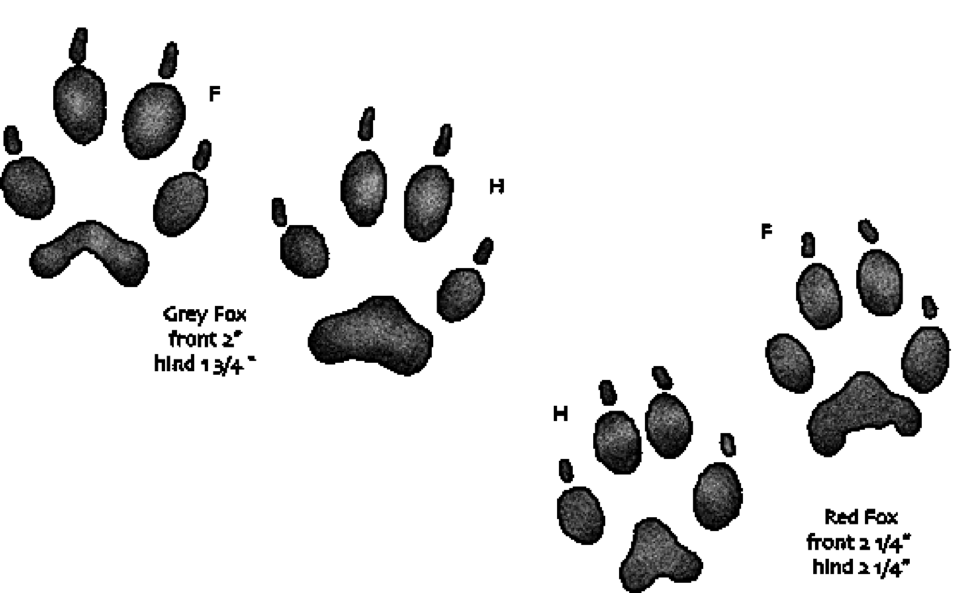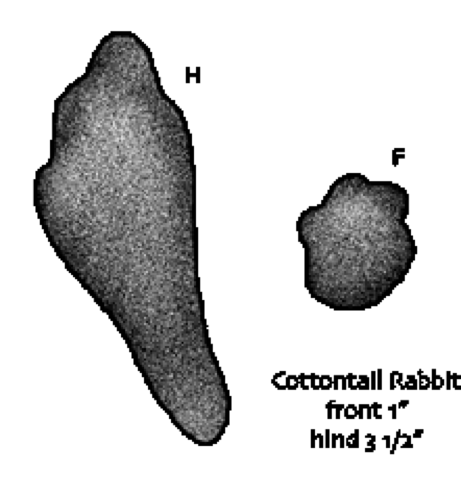Back in March, readers of this blog received a very brief lesson in identifying pest animals by their tracks. Raccoons, opossums, and squirrels were covered in that post, but those three obviously aren’t the only animals that can cause problems when they decide to take up residence in your home or yard. So, let’s take a few minutes to learn about tracks belonging to another set of critters!
Once again, we’ll be using the term “handprints” to refer to marks made by an animal’s forefeet and “footprints” to refer to marks made by an animal’s back feet. We’ll also describe digits on the forefeet as “fingers” and digits on the back feet as “toes.” These are not scientifically accurate terms, but they do make describing track shapes a little easier.
Foxes
People who keep chickens or rabbits in their yard need to be especially wary of foxes, as these predators are notorious for their ability to stalk and kill backyard livestock. Now, foxes typically won’t attack small dogs or cats the way that coyotes will, but that doesn’t mean you should allow one to live on your property.
Fox tracks differ slightly depending upon whether you’re dealing with a red fox or a gray fox, but they both have the same basic shape: four round “fingers” or “toes” on each hand and foot, with visible claw impressions. Grey fox handprints have more of an inverted “V” shape to the palm, while gray fox footprints and both sets of prints on a red fox will be more triangular.

Skunks
The good news is that if you have a skunk on your property, you probably won’t need to find tracks in order to verify its presence. The bad news is that you won’t need footprints because you’ll probably smell the skunk long before you see it! Still, knowing what skunk tracks look like may allow you make to a pre-emptive strike…or at least watch your step while you’re walking around outdoors.
When compared to fox prints, Skunk handprints may seem to have a slightly “squished” appearance. They’ll still have five round toes and visible claw impressions, though. Skunk footprints will somewhat resemble human footprints (albeit flat-footed, slightly distorted ones), but the five toes will usually show a small amount of claw.

Cottontail Rabbit
Some folks may take offense at us referring to rabbits as “pests,” but if you’ve ever caught a rabbit using your vegetable/flower garden as a breakfast buffet, then you’ll understand why we’ve given them this distinction! It’s also pretty common for rabbits to build their nests in the yards of human homes, and that can cause problems for everyone involved.
Unless the rabbit in question was moving very deliberately or dashing through extremely fresh snow and/or mud, you likely won’t be able to see its paw impressions. Instead, rabbit footprints tend to be long and slab-like (somewhat resembling a T-bone steak), while rabbit handprints are round blobs. Keep in mind that snowshoe hairs are not native to Texas, so any rabbit tracks you find (even ones that appear to be very large) are likely going to be your run-of-the-mill cottontails—or someone’s lost pet.

Speaking of pets…
Dogs (versus Coyotes)
If you live in the suburbs, you’ll probably wind up seeing dog prints more than any other animal tracks. It’s a good idea to familiarize yourself with them, lest you lay eyes on a neighbor’s dog’s footprints and jump to the conclusion that coyotes have set up shop in your cul-de-sac.
Though dog prints do closely resemble coyote prints, there are a few subtle differences. Coyote prints generally show toes that are more closely packed together, especially on the footprints, with longer claws. Another important distinction is their size. Coyotes are smaller than a lot of people realize, with adult males usually weighing less than 45 lbs. Compare this to the average adult weight of a (healthy) male Labrador retriever, which can be between 65 and 80 pounds. Thus, a paw mark that’s any larger than 2.5 inches in length was probably made by a large or even medium-sized dog, not a coyote.

■■■
Finding the occasional footprint in your yard or garden should not necessarily be cause for concern; the skunk or fox that left a muddy trail on your patio may have “just been passing through.” And many people (especially young children) are actually delighted by visible paw marks, as they’re tangible proof that nature is all around us—even when we live in the suburbs or cities. However, finding wild animal tracks inside your home, or noticing that a persistent critter has decided that they’d like to live on your land full-time, is cause for concern! Regardless of how cute it may act or intriguing it may be to watch, any wild animal who overstays its welcome should be evicted immediately!






